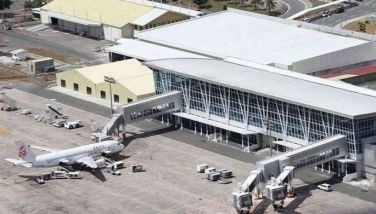Filipino migration to continue, according to PIDS study
MANILA, Philippines - The aging population and accommodative migration policies of most destination countries, plus the inability of the domestic economy to offer jobs, will mark the continued migration of Filipinos seeking better opportunities abroad.
According to the study conducted by the Philippine Institute for Development Studies (PIDS), aging countries are expected to increase their demand for health professionals and eventually other set of professionals who will fill the gap in their labor force. Migration policies will likewise provide the structure on the flow of both permanent and temporary workers.
The authors of the study, PIDS senior research fellow Dr. Aniceto C. Orbeta Jr. and research analyst Michael Ralph Abrigo, said that the increasing number of migrants in the population is expected to deepen (more in the same household) and widen (other households in the same geographic area) the scope of migration because of a high probability that migrants will effectively reduce migration costs.
“The drivers and prospects both in the local economy and in the major destination countries will define also the future of migration streams in the country,” they said.
The financial crisis in 2008 did not stop the migration, and eventually remittance numbers for Filipinos although it had a negative impact on other migrating nationalities.
Last year, the number of overseas Filipinos did not contract but merely decelerated. Remittances that passed through the formal or banking sector actually expanded by over six percent.
Meanwhile, key factors affecting migration of Filipinos are the domestic economy, demography, politics and the environment.
The economy has failed to expand and thus job opportunities are contracting, and it has been notoriously consistent for its inconsistent economic boom.
In terms of demography, there is a high population in the Philippines accompanied by a slow decline in fertility rate in neighboring and in destination countries. Given this dual situation, Filipino migrants can obviously fill the population gaps and lack of human labor in major destination countries.
The study observed that since the 1980s, the political “adventurisms” of the country contributed to the lack of political stability, and led to a push migration to “safer and more stable” developed countries.
Finally, the Philippines not only averages 20 typhoons a year, but the intensity and volume of rain has been reaching disturbing levels. Plus the vulnerability they bring especially to large coastal areas during this time of climate change encourages migration.
The PIDS study said that in the short-term the demand for overseas Filipinos and other foreign workers accelerates in the Middle East and Asian countries as the infrastructure boom continues.
The annual flow of Filipino migrants shows that temporary migrant workers, over permanent, dominate in terms of volume, with around 36,000 workers leaving the country in 1975 up to more than 1.2 million in 2007.
Among the temporary migrant workers, land-based workers have comprised around eight of every 10 workers leaving annually since the 1990s. This includes the increasing number of new-hire and the even faster increasing proportion of rehired workers, which show that employers prefer workers with prior international experience.
Land-based temporary migrants are composed of professionals, service workers, production process workers, transport workers, and laborers. The professionals consist of architects and engineers, health professionals, and composers and performing artists. Service workers, on the other hand, are mainly composed of maids and housekeepers deployed around the world.
When compared with the domestic labor force, Filipino temporary migrant workers are shown to be younger and better educated. Around seven of every 10 temporary migrant workers are of ages between 24 to 44 years old and half of them have at least some tertiary education. Temporary labor migration is likewise selective of sex, with majority of temporary migrant workers being women.
Meanwhile, Filipino permanent migrants are in the developed countries of North America, particularly the United States (US). Other destinations of permanent migrants are countries in Asia, Oceania, and Europe but the proportion is far lower than that in North America.
The larger proportion of permanent migrants (}mostly highly educated) are unemployed—housewives, students, and minors—dependents of professionals who emigrated because of more career advancement opportunities, over and above the differences in wages. This scenario is created by the family reunification goal of permanent migration in the US – the prime destination of Filipino emigrants.
- Latest
- Trending




























